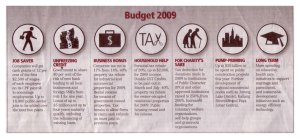In this 1987 Asian Media Information and Communication paper that I found via Googling, Peter Ong, a former regional editor of the Society of Newspaper Design, provides a short history of newspaper design. A former editor in The Straits Times and The New Paper, he sees the birth of newspaper design as a necessary response to consumer’s changing expectations and needs, and looks to the American newspapers as the leaders in this area. The follow areas are covered in this 14-page PDF
- The American Experience — why and how American newspapers focused on newspaper design
- Design Trends — modular layout systems, how wide a column should be and what kind of font size to use
- Why redesign a newspaper and how to go about doing it
- Thoughts on the electronic newspaper and how it might change things
Though dated, this is still a very good read to be introduced to the fundamentals of newspaper design. The section on why to redesign and how to go about doing it is very useful for understanding the process of putting together a newspaper. Finally, it is quite interesting to see how his predictions of changes to the newsroom over 20 years ago panned out:
Just imagine this: A reporter leaves the office for an assignment with a photographer. All she has in her hands is a tiny tape recorder. No notebook. No pen or pencil.
The photographer, too, is seen with a strange-looking camera. Instead of the usual film, the camera has a computer-like disk.
At the end of the assignment, they return to the office. The reporter plugs her tape recorder into a computer system and the story appears on the screen in front of her. There is no typing to be done. Any corrections she wants is made through a voice-activated computer. When she is satisfied with her story, she transmits it to her editor at the click of a button.
In the photo department, the photographer slips the disk into a computer. He scans through the pictures he has shot, selects the best and then transmits it to the editor.
The editor calls up the story and photograph on a video display terminal, crops and sizes the picture the way he wants it and merges it with the story which he has edited.
Story and picture are sent to the sub-editors and designers who then lay out the various pages on a video display terminal. Once the page is completely filled, he sends the page off to the production room where a plate is made directly from the computer. The page is ready for printing any minute now.
Except for the part on “no typing”, much of what he imagined has actually come true!







